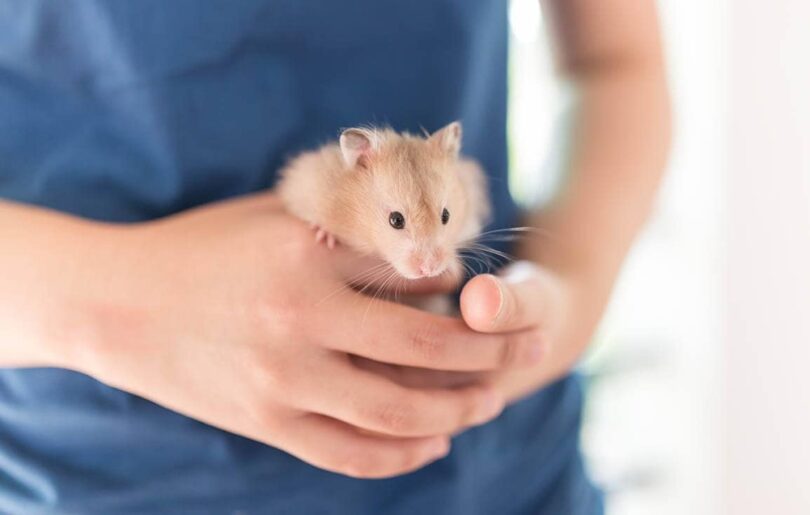
[ad_1]
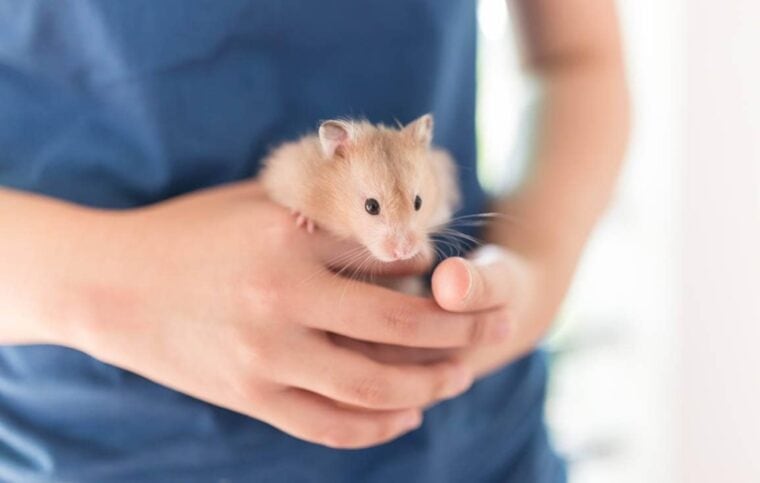
Hamsters are fun animals to keep as pets, especially for children. They don’t require nearly the level of care that a dog or cat does, and they don’t take up too much space. These little furry creatures spend most of their time in an enclosed habitat indoors, where temperatures are typically controlled. Still, it’s important to know what the ideal temperature for hamsters is and how you can ensure that your hamster is always comfortable — never too hot or too cold. So, what temperatures do hamsters do the best in? Find out here!
Normal Hamster Temperature Levels
In general, hamsters seem to do best in temperatures between 65 degrees and 80 degrees Fahrenheit. Hamsters may start to hibernate or go into “torpor” if temperatures get too much lower than 65 degrees. Hibernation can be dangerous for hamsters, as it encourages dehydration and malnourishment. Hamsters are also sensitive to heat. Prolonged exposure to high temperatures could cause them to overheat. Therefore, it’s important to keep temperatures under control as much as possible, no matter what time of year it is.
Safe Hamster Temperatures During Winter
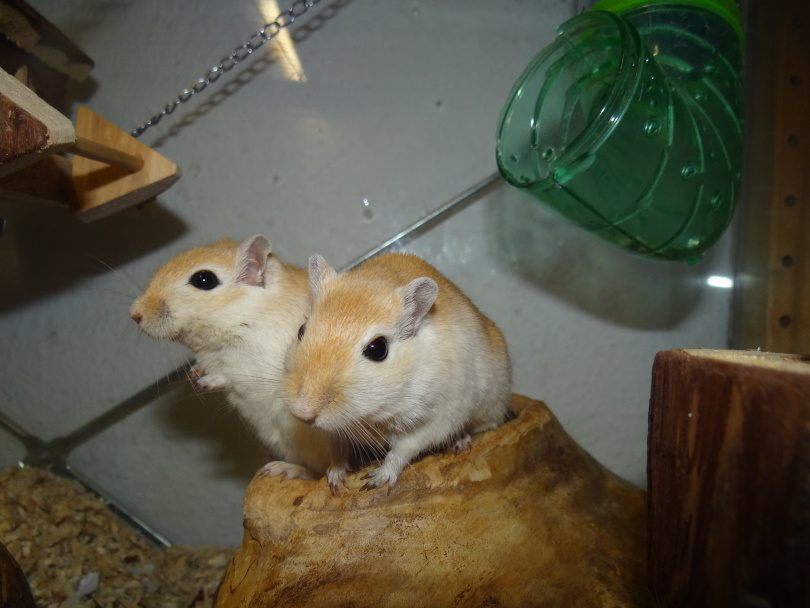
Hamsters should not spend a prolonged period of time in temperatures below 60 degrees during the winter months. If temperatures dip lower, you could find them hiding in a corner, barely moving, as they try to protect themselves from developing hypothermia. There are ways to keep your hamster warm when it’s colder than should be in their environment.
Safe Hamster Temperatures During Summer
When temperatures start to rise as summer approaches, your hamster may feel the effects. They can handle temperatures up to about 80 degrees Fahrenheit, but prolonged exposure can cause overheating, heatstroke, and even death. Signs of an overheating hamster include panting, weakness, slobbering, and even convulsion.
What Causes Temperature Changes in a Hamster’s Environment?
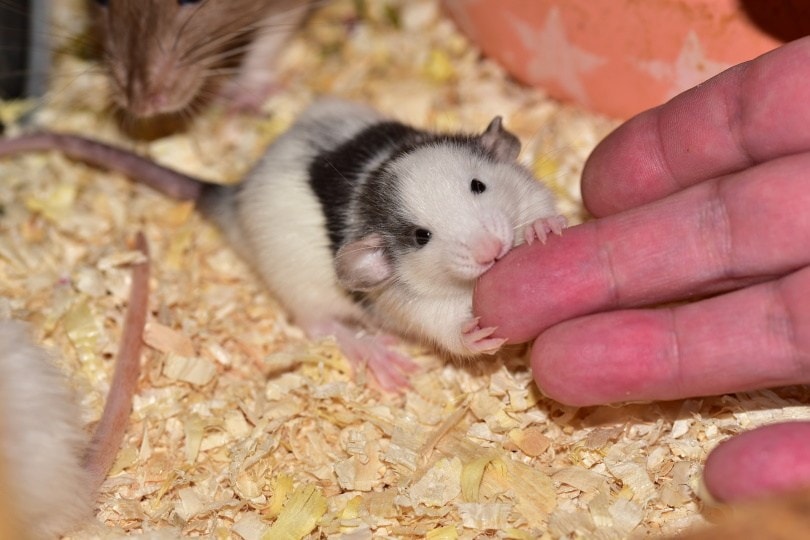
The biggest factor that causes temperature changes in a hamster’s environment is the weather outside. The colder it gets outside, for example, the colder it gets inside, especially near windows. Another factor to consider is your home’s thermostat. Just because you’re comfortable hanging out in a sweater and/or under a blanket does not mean your hamster is comfortable. Things like portable air conditioners and fans, heaters, and bright lights that are too close to your hamster’s habitat can also affect the temperature inside their habitat.
How to Improve Temperature Levels in and Around Your Hamster’s Habitat

The easiest way to improve temperature levels in and around your hamster’s cage or habitat is to adjust the thermostat in your home. However, if you don’t have an HVAC system, you may not have the luxury of doing this. Here is what you can do instead to help improve temperature levels in and around your hamster’s habitat.
To Beat the Cold

To Beat the Heat
Frequently Asked Questions (FAQs)
Q: If Wild Hamsters Live in Rigid Temperatures, Why Can’t My Pet?
A: Wild hamsters do live in harsh climates; however, they can dig tunnels underground where they can create insulated nests to hang out in when the temperature is just too hot or cold to deal with above ground. If temperatures do get too hot or cold, even in their underground nests, they will hibernate out of necessity. Your pet hamster cannot do these things because they live in a small habitat with no insulating ground to burrow in.
Q: Would Hamster Clothes Help Keep My Pet Warm?
A: Clothing may be cute and help keep your hamster a little warmer, but it is more likely that the clothing will do more harm than good. Hamsters don’t wear clothes in nature, and the clothing that you put on them will stress them out and make them uncomfortable. It’s best to let your hamster live as much of a natural life as possible.
Q: What Should I Do If My Hamster’s Behavior Changes While Trying to Control Temperature Levels?
A: If you are trying to increase or decrease temperature levels yet your hamster seems to be reacting poorly to their environment or their behavior changes, it is important to contact a veterinarian as soon as possible. Don’t wait to see what might happen, as it could be too late by the time that you get professional help.
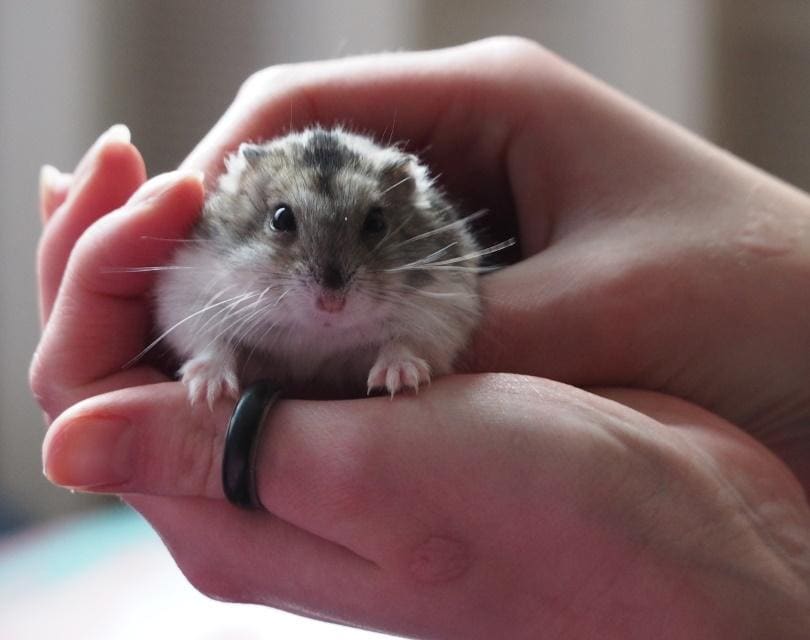
Conclusion
A hamster enjoys comfortable temperature levels as much as we do. Any serious fluctuations must be addressed to ensure that your hamster stays cool (but not cold!) and comfortable throughout the year. Hopefully, you now have a clear understanding of what the temperature levels should be like for your hamster and how to improve them when necessary.
Featured Image Credit: Akkalak Aiempradit, Shutterstock
[ad_2]
Source link



